Obscure Big Beat Artists You Need To Know About
Same as with any form of media, music tends to go through “fads” where a certain style of music becomes incredibly popular, leading to new acts rising to prominence in the scene, old acts adapting styles to fit with the times, and an eventual crossover with mainstream popular culture. Perhaps the genre group known for going through very different trends in a relatively short amount of time is Electronica- or EDM, if you prefer. Nowadays, the biggest genres in the scene are Dubstep, Future Bass, Trap, Electro House and the like, but perhaps the most interesting and culturally relevant Electronica trend was the Big Beat boom of the late 90s and early 2000s. Though there was no real strict mould for what a Big Beat song should sound like, typically elements involved sampled breakbeats, Acid-style basslines, Hard Rock guitar loops, and an Acapella or two from an old Funk bootleg. As a result of it’s crossover appeal, it not only gained a level of mainstream acceptance that saw the tunes commonly crop up in adverts, TV shows and films, but it could arguably be considered the first style of electronic music to gain a foothold in the United States. We’ve all heard people bang on about the greats of the genre- Fatboy Slim, The Chemical Brothers, The Prodigy etc.- so today, we’re going to look at five Big Beat acts that were never quite as popular as the big boys.
Midfield General
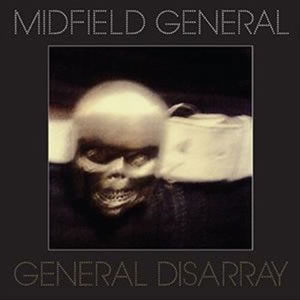
We couldn’t have put this list together without giving props to the man who could be considered the Grandaddy of the genre itself. Midfield General, real name Damian Harris, is mostly known for being the founder of the legendary Skint Records label, and helping Norman Cook conceive the Fatboy Slim alias. He was also a producer in his own right, however, and played an equally instrumental part in developing the fostering genre. His take on it could be considered a tad more eclectic then Norman’s, featuring a slightly heavier emphasis on twisted synth lines and bizarre vocal sampled. He also collaborated with Noel Fielding (of The Mighty Boosh fame) on the track “Midfielding”, which certainly counts for something. If you’re only familiar with more 'typical’ examples of the genre however, Midfield General’s wonderfully strange tracks will feel like a breath of fresh air, and work as an excellent gateway into the weirder side of Big Beat.
Essential Tracks: Stigs Inn Love, Devil In Sports Casual, Ricky 39, General Of The Midfield, Midfielding
Propellerheads
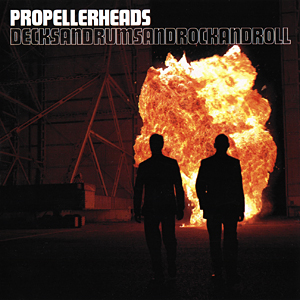
It’s a situation that many musicians wind up in; they pour blood, sweat and tears into an entire albums worth of material (and more besides), and only one song from it really resonates with the general public, oftentimes becoming the only song of theirs people know. Propellerheads experienced it full force with their first (and sadly only) album, as the single History Repeating is the only song from it that seemed to catch on, helped in part by a feature from the legendary Shirley Bassey. Those of us that decided to dive into the album in it’s entirety, however, found a pretty phenomenal record that pulled largely from funk and big band swing then it did anything else. For every crisp drum break, synth bass and cut-n-looped guitar, there’s some fantastic orchestral overdub work. The end result plays out a bit like what might happen if Big Beat had a saucy one night stand with John Barry (AND his orchestra), and while it certainly sounds “of its time”, it’s undeniably unique within the genre and an incredibly fun listen from start to finish.
Essential Listens: On Her Majesty’s Secret Service, Take California, Spybreak!, Cominagetcha, Velvet Pants
Cut La Roc
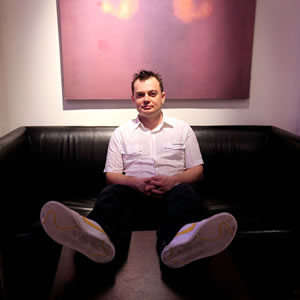
Lee Porter’s work under the Cut La Roc name was fairly varied, even on the same album. Not wanting to restrict himself to just one style or approach, he put out tracks that took cues from hip hop, breakbeat, techno, trip hop, and a host of others on top of the typical Big Beat influences. The resulting mixture of ideas makes his debut album, La Roc Rocs, a sort of “Best Of” of the sounds of the late 90s; dark techno synth sequences, repurposed funk loops, moody slowjams with melancholy raps spun over them, if you heard it in songs between 1998 and 2002, it’s probably on this album. That might turn a few people away, but we recommend sticking with it; beyond the sheer nostalgia value the album offers for anoraks like us, it’s an extremely well produced album chock full of great material. The multi-style approach also allows the album to avoid the “too samey” issue that a lot of people have when it comes to full length LPs by electronica acts; the tracklist jumps from style to style and tone to tone across it’s 11 tracks, keeping the listener on their toes the entire time. And besides the point, you know an act’s gotta be good if they did a collab with Snow Patrol, right?
Essential Listens: Hip Hop Bibbedy Bop, Freeze, N.Y. Pimp, Makin’ It Hot, Post Punk Progression.
Lunatic Calm
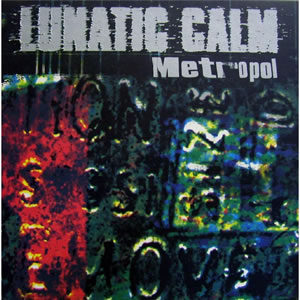
The Prodigy often get acclaim for taking the Big Beat sound and intensifying it with even harder guitars, aggressive vocal delivery, and overall “menacing” sounding songs compared to typical Big Beat fare. And while they popularised this harder take on Big Beat, they weren’t the only ones doing it. Lunatic Calm had initially debuted a year before The Prodigy went all Firestarter, and dropped their debut album, Metropol, around the same time The Fat Of The Land came out. For all intents and purposes though, it’s the darker album, eschewing any brighter, funkier cuts in favour of hard hitting synth basslines, dusty breaks, and some fierce guitar riffs. Their darker style was so pervasive that not even their slower songs, from the first album and beyond, were able to avoid weird synthy loops or moody atmospheres that capture a real sense of dread and melancholy, and they occasionally branched out to include Industrial and Jungle influences on cuts like Choke and Punkywhitenoisething. For better or for worse, Lunatic Calm’s sound can be best summed up as “90s Edgy”, bringing to mind images of dark shades, long trenchcoats, and nihilistic Matrix quotes.
Essential Listens: Roll The Dice, Leave You Far Behind, Neon Ray, Your Future, Neverstop
Cut & Paste
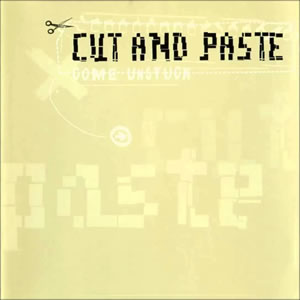
Like a couple of the acts above, Cut & Paste only ever released a single album. The difference here, though, is that they barely released anything else at all; they came, quietly released a few bits and pieces, then went. And it’s a shame, too, because even in a genre that’s built on sampling, Cut & Paste’s name is a very apt. description of their approach to the genre. Rather then simply using samples as an element of their work, they used them as the cornerstone of their tracks for the most part, emphasising them in a way that’s not too dissimilar to a Mash Up artist- the track Cut And Paste is probably their triumph in this regard. Even moreso then usual, they worked predominantly with samples from funk and soul songs, expertly chopping and looping them over the occasional drum machine beat and fuzzy bassline. Interestingly, when it comes to the custom elements, their approach is fairly minimal, but that just adds to the overall appeal of their work- something that builds and expands on the sounds of old by taking them in entirely new directions. It’s a real shame that little more came from the act beyond the end of the 90s.
Essential Listens: Cut And Paste, Forget It, Planet Boogie, Watch This Sound, Half Term Break